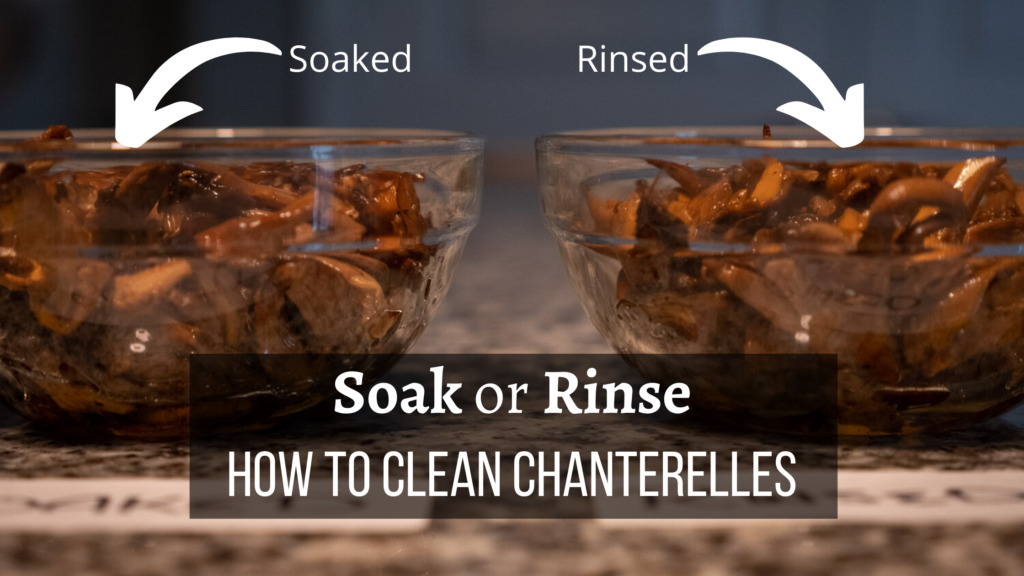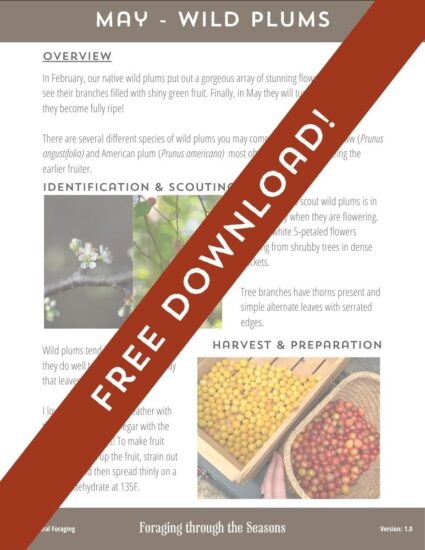Cleaning Chanterelles
In North Alabama, summertime is filled with fast Southern storms. They’ll rip through with a cascade of rain and leave behind a humid sunny days not fifteen minutes after starting. The storms that run through create ideal conditions for the growth of prized gourmet Chanterelle mushrooms. However, they also create a problem. Heavy rain splashes dirt and sand into the false gills and crevices, then the following hot sun cements them to the mushroom.
There is nothing worse than a delicious chanterelle meal being ruined by gritty sand in every bite. Foragers need to be able to clean their harvest effectively. But what is the best way?
In this article we’ll investigate (as scientifically as possible) why you should be cleaning with water and further which water cleaning method is best!
Why you should clean with water
In order to demonstrate the importance of using water to clean your Chanterelles, I tried to clean a harvest as best I could without any water. I first used a toothbrush to attempt to get sand and dirt off of the mushrooms, then I used a damp paper towel. They looked relatively clean, but I wanted to be sure.
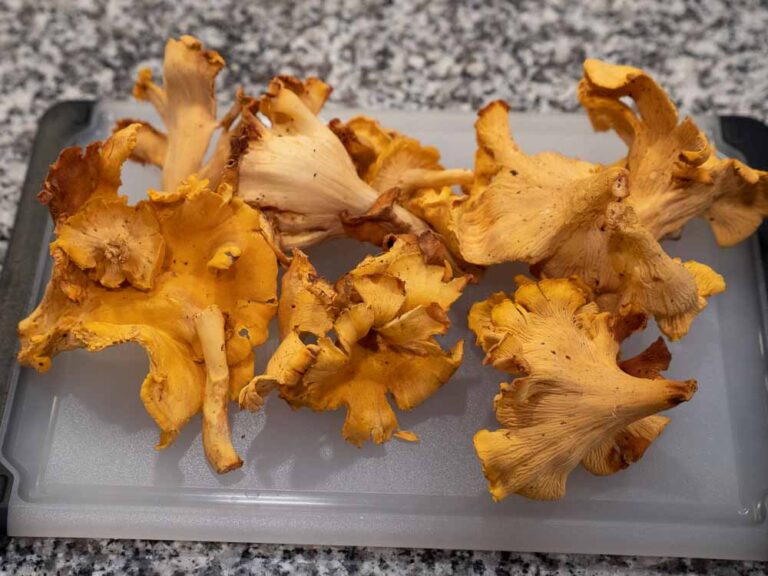
Next, I used the soak method (which we’ll discuss further in the article) and observed how much sand/dirt was left in the water after cleaning. The results speak for themselves! Even after cleaning as best I could, the picture below shows how much was left to be removed. This would have ended up in my meal!
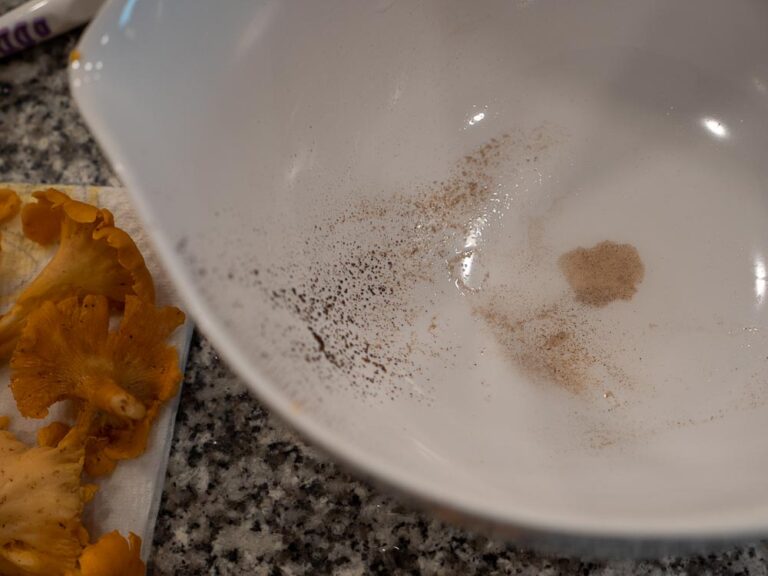
Soak or Rinse
Now that we have established that you absolutely should clean your chanterelle harvest with water we arrive at the debate and question we are trying to answer. Should you soak them or rinse them?
Proponents of rinsing say that it will clean the mushrooms thoroughly enough without them taking on excess water. Proponents of soaking say that rinsing doesn’t clean enough and that soaking will clean more effectively and easily.
“How to Clean Mushrooms”– from Wine Forest Wild Foods, says rinse.
“How to Clean and Cook Chanterelle Mushrooms” – from Dwell Mode, says squish quickly in water.
“Chanterelle Mushrooms” – from Wild Harvest, says rinse.
“How to Cook Chanterelle Mushrooms” – from Forager Chef, says quick swish in cold water.
Does one method clean better than the other?
Will it impact the final cooked product either way?
Let’s find out!
Caveat
This article investigates how to clean mushrooms for cooking, not for storage. It assumes that you will be cooking your mushrooms relatively soon after cleaning. I haven’t fully investigated whether or not it is best practice to clean this way for longer term storage.
Method
Divide & Dry Weigh
I took a relatively dirty chanterelles from the same harvest and roughly divided them in half and weighed them both dry to get my starting weight.
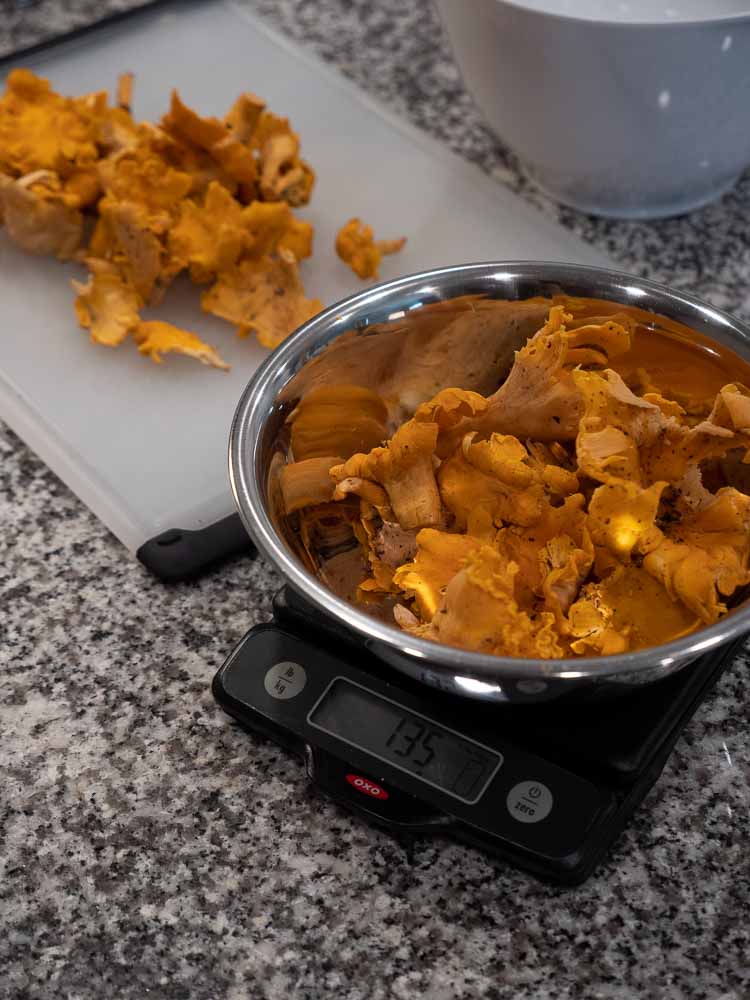
Soak
I filled a mixing bowl with cold filtered water and placed my chanterelles in the bowl. At first, I tried to clean them with a damp paper towel, but that wasn’t working well so I switched to a toothbrush. I often had to swish the mushrooms in the water in order to remove the dirt and debris fully. Once cleaned, I placed the mushroom onto a paper towel to sit. Once all of them were washed I weighed them.
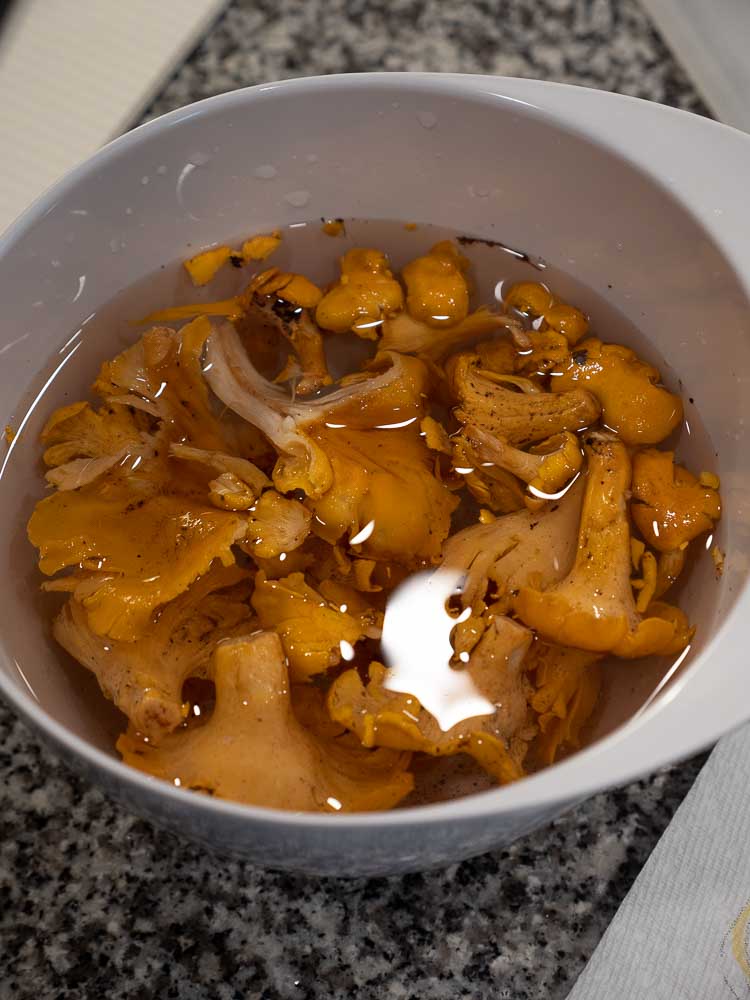
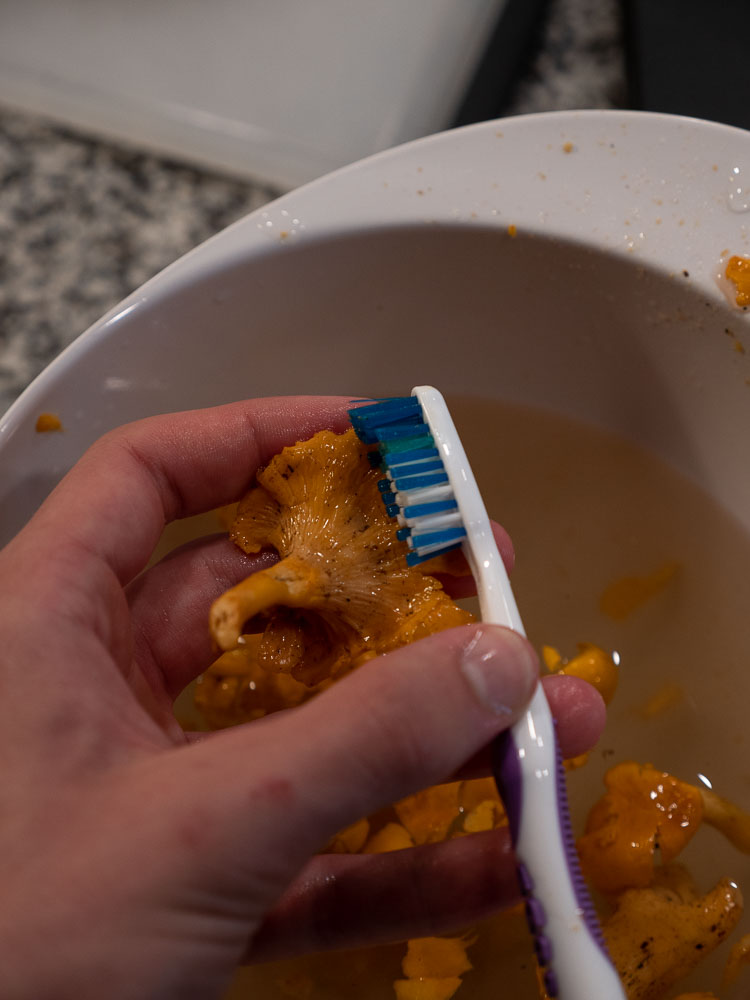
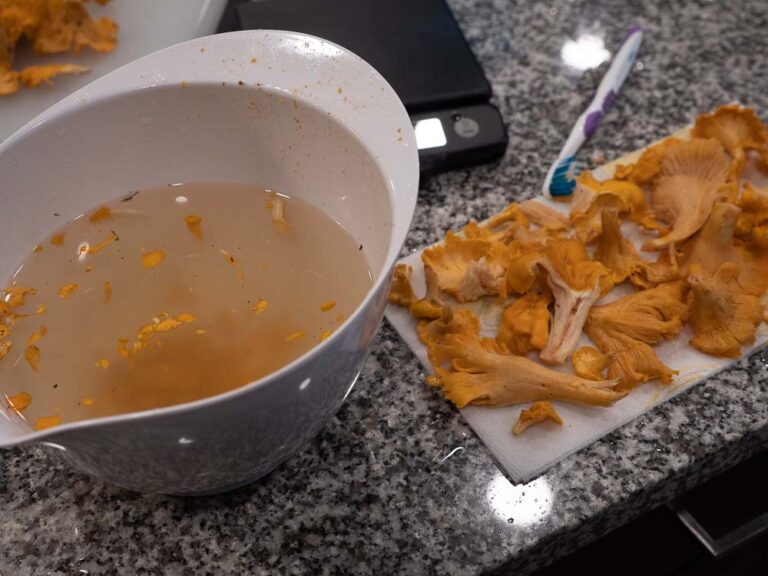
Thoughts – Soaking worked very well. The process was quick and simple. After I finished cleaning, I noticed how much sand and dirt had been removed from the mushrooms, definitely not something I wanted in my food!

Rinse
I washed the mushrooms over a steady stream of cold tap water. I used the toothbrush while the chanterelles were under the running water in order to get into the grooves of the mushrooms and ensure that as much sand and dirt were removed as possible.

Thoughts – it felt like rinsing cleaned them more thoroughly, but I’m not sure that is actually true. I would say there is no difference in ease between the two, although the soak method uses far less water if that is important to you.
Wet Weight
Now that I had cleaned my mushrooms it was time to weigh them to see how much water that they absorbed. For results, see table below.
Both methods gained roughly the same amount of water, 19g for soaking and 15g for rinse. If we scale to the starting weights then we’ll find that they’re very close, 14% vs 12.5%. So the difference in water absorbed is almost negligibly different!
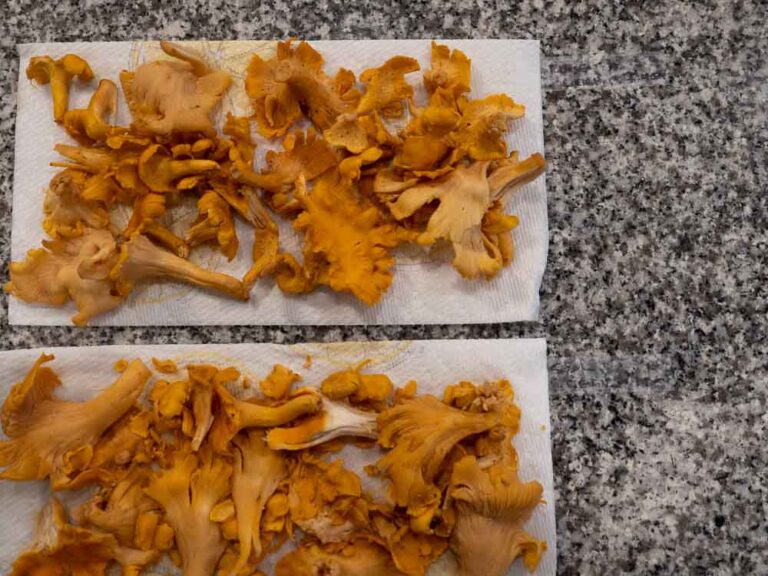
Cooking
I cooked both of these mushrooms the exact same way. Same pan, same amount of oil & butter (scaled to weight), same cooking time. I cooked them using my tried and true cooking method from my favorite food science show, America’s Test Kitchen. Watch the video explaining the method and breaking down the science of why it works!
Here are my exact cooking notes:
- Add mushrooms to cold pan along with splash of water and a pinch of salt, turn heat to medium
- As the mushrooms heat up they will begin to release their water, continue cooking until evaporated
- Added oil in the amount of 10% of the starting mushroom weight (160g mushrooms -> 16g of oil) along with 2 pinches of salt and cooked for 5 minutes
- Added butter in the amount of 2.5% of the starting weight (160g mushrooms -> 4g of butter) and cooked for 3 minutes
- Transferred to bowl to enjoy!
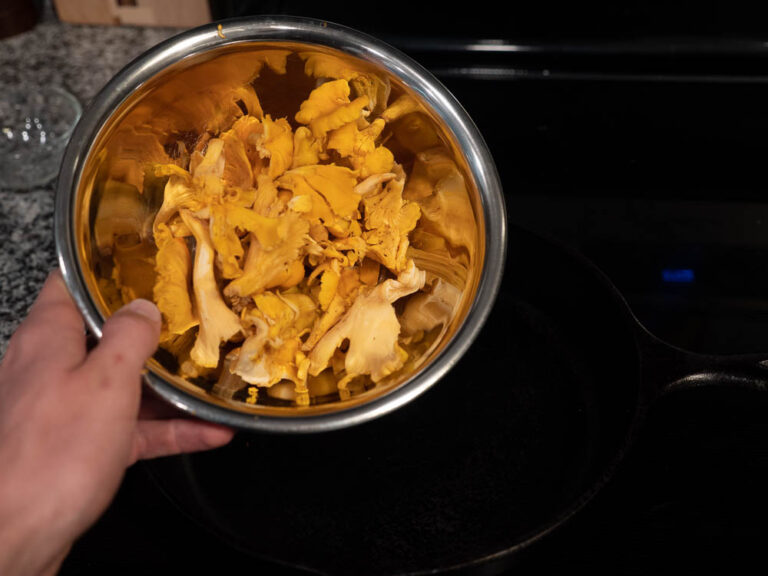
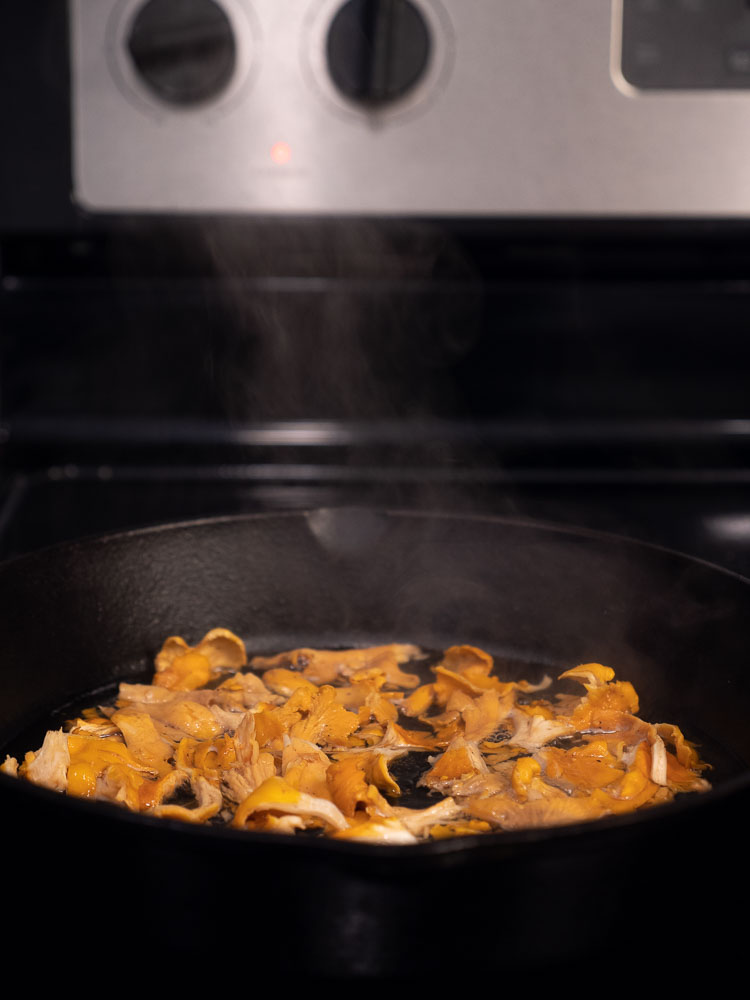
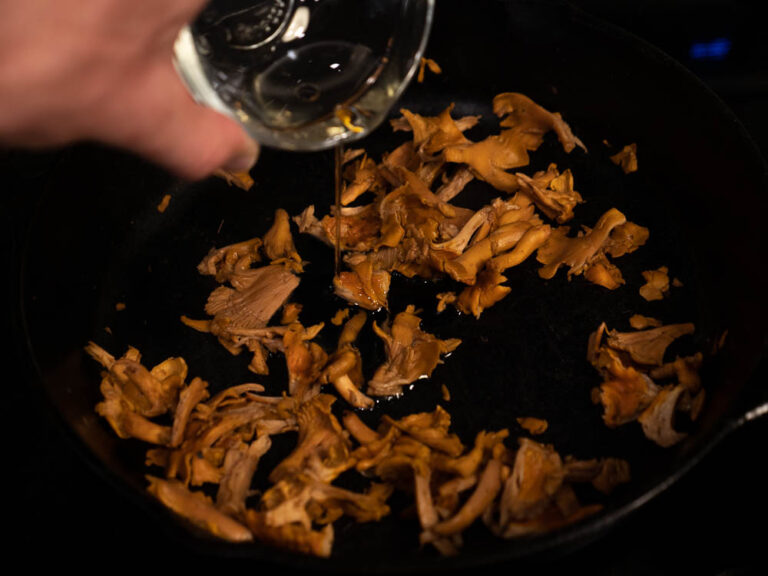
Results
Table – Results of weight gained from each method
After sampling the final produce of sauteed mushrooms from each of the methods, if there were any differences, they were indeiscernable to me! I really tried to taste any differences, but couldn’t find any. They were both great! Further there wasn’t any difference in the amount of gritty material.
Therefore:
- Both methods resulted in great tasting mushrooms
- Both methods cleaned effectively
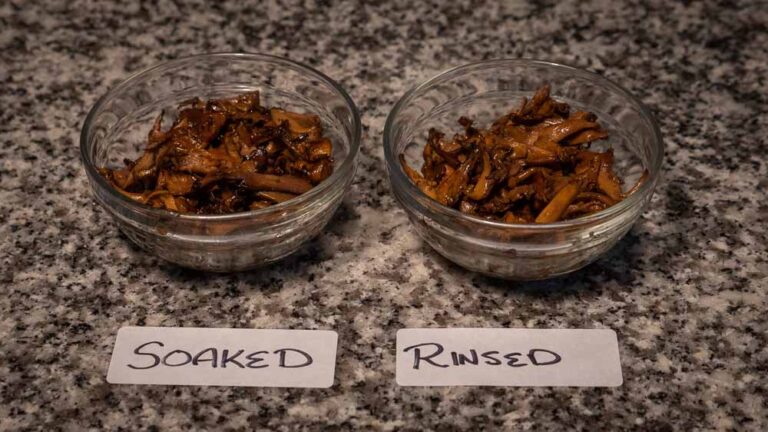
Final Thoughts
You should be washing your chanterelles with water. I haven’t found a good method to remove dirt and debris without water, but honestly it doesn’t even matter. Why? Because the best way (IMO) to cook chanterelles is to add water to the beginning of the process anyway. As long as you follow the method shown in the ATK video above, this will not result in “soggy” mushrooms, but ones that are crisp and flavorful.
When it comes to the best way to wash them I’d say the only thing that matters is personal preference. It won’t make any difference in the final outcome! I found soaking a bit easier and more water efficient so that’s what I’ll be doing in the future.
So whether you are a soaker or a rinser, clean your mushrooms and enjoy the delicious bounty of the wild!
I hope this investigation answered all your questions, but if it didn’t feel free to ask for any clarification in the comment section. Happy Foraging!

